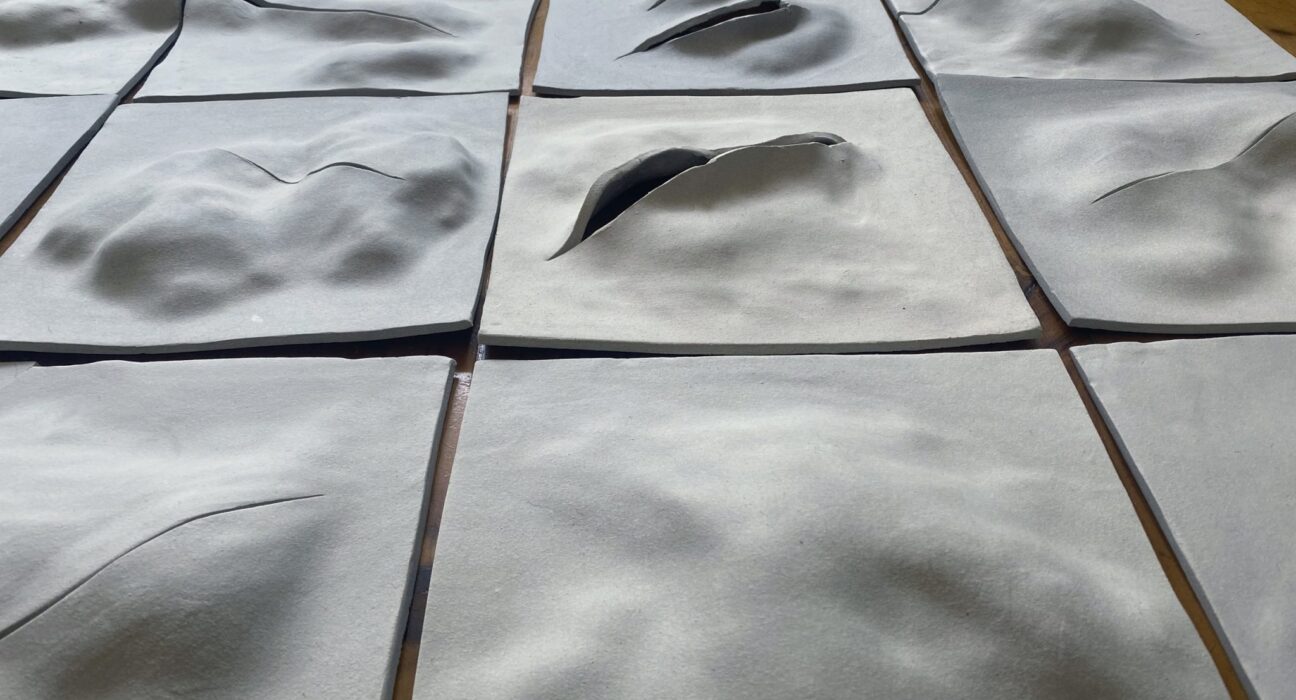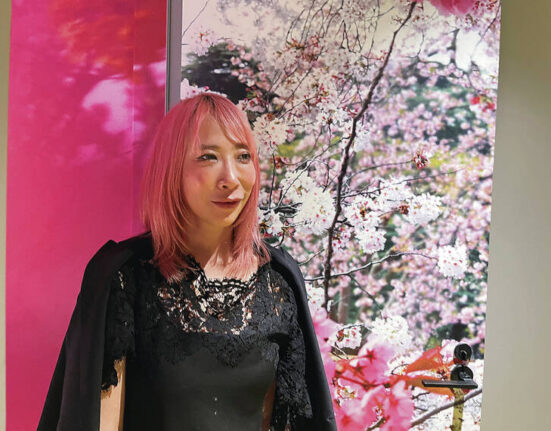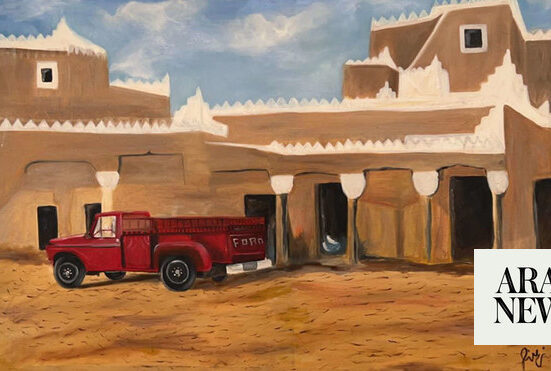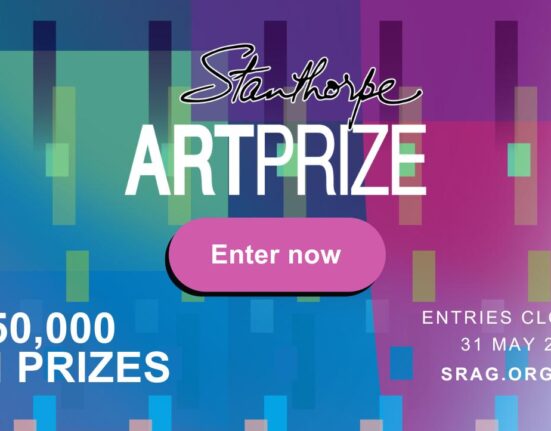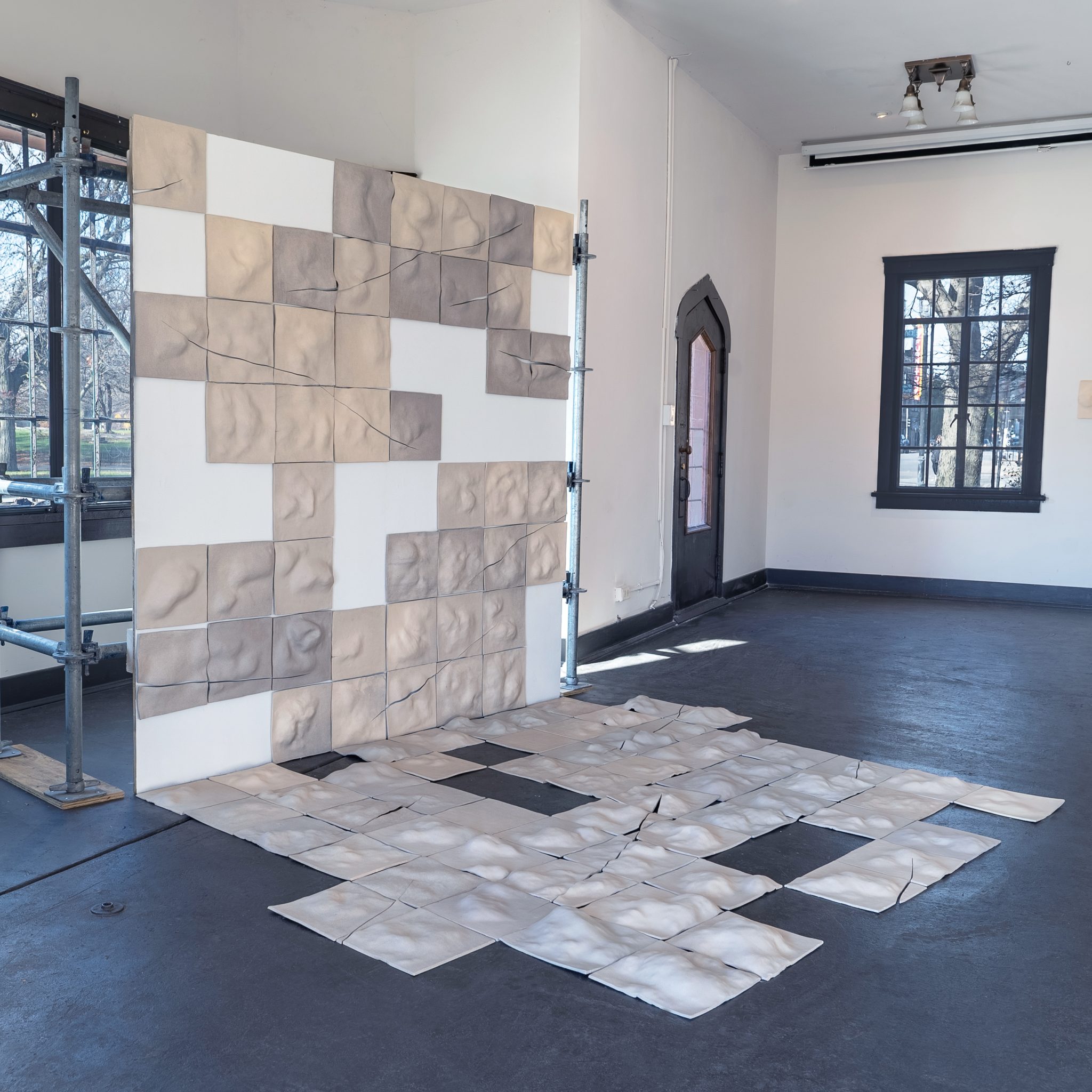
Leticia Pardo, installation view of “Wounded Territory,” 2023, at Comfort Station/Photo courtesy of Comfort Station.
The idea of a wounded or hurting landscape is well-traveled ground within contemporary art, but the ways that artists respond to this idea are varied and unique—no one grieves in exactly the same way.
The landscape in “Wounded Territory” is both minuscule and monumental. Clay tiles in varying off-white shades are arranged in a grid on a large structure made from scaffolding and plywood. The grid also extends onto the concrete floor of the exhibition space, creating a backdrop that viewers walk around to get to another grouping of tiles arranged on the gallery’s back wall for closer inspection. Tiles are absent from some spaces in the grid, leaving either the white face of the plywood wall behind them or the dark concrete underneath them exposed. The surface of the tiles is gouged and cut in long, sharp lines, and the uniformity of the grid is also broken up by bulbous forms that almost all of the tiles seem to conceal beneath their surface. The effect of the grid, especially on the floor, reminds me of patchwork farmland from an airplane window, but an ashy, barren color supplants the expected greens of fields and forests. While the lumpy shapes of each tile are easily read as topography, I am also struck by how biological they feel. I can’t help but think of the clay grid as a quilt covering limbs and torsos beneath it. Pardo describes these forms as either a zoomed-out view of something very large or a zoomed-in view of something very small; both interpretations feel equally valid.
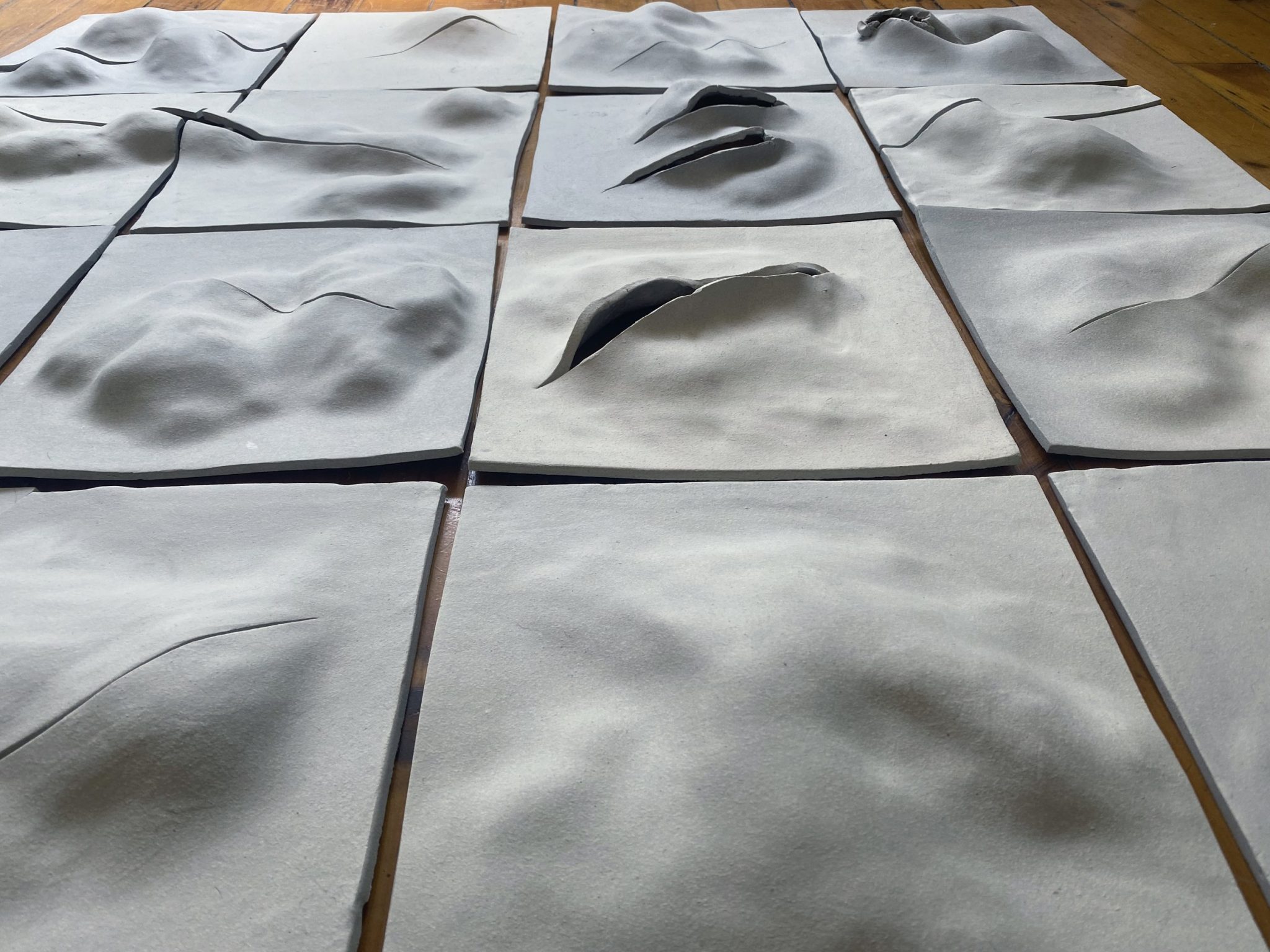
Leticia Pardo, “Wounded Territory,” high fire clay, variable dimensions/Photo courtesy of Comfort Station.
The exhibition text for “Wounded Territory” asks viewers to consider their relationship to borders, and in Pardo’s work this means the many different kinds of borders that attempt to confine and define us. (A quick aside: the risograph-printed materials that Comfort Station created for this exhibition are a work of art in their own right!) Borders are also physically omnipresent in the work: By using a grid, Pardo sets up the expectation that each tile is a constrained unit. These expectations are challenged by the continuity of cuts and cracks that extend across multiple tiles, understood either as a refusal to abide by the established grid or as damage to the cohesive whole that the grid forms. These are personal analogies, but they take on additional significance in the consideration of political borders and the narratives that surround them. Pardo’s treatment of borders is precise and nuanced, informed by her experience as a Chicago-based artist from Mexico City. “Wounded Territory” certainly represents the trauma of communities split by the United States–Mexico border, but it also engages with borders as forms of creative limitation to be overcome. These borders become an obstacle to communicate across as Pardo incorporates a wide variety of different visual languages in her work, including ceramics, drawing, architecture and installation. Borders are usually used to define binary states: interior and exterior, us or them. Pardo instead uses borders as a tool to examine this relationship more closely, at times existing within and at times pushing well beyond these constraints.
“Wounded Territory” is on view at Comfort Station, 2579 North Milwaukee through November 26.
Frank Geiser is a visual artist and arts writer based in the south suburbs of Chicago. He is a professor of Visual Communication and Design at Purdue University Northwest.

